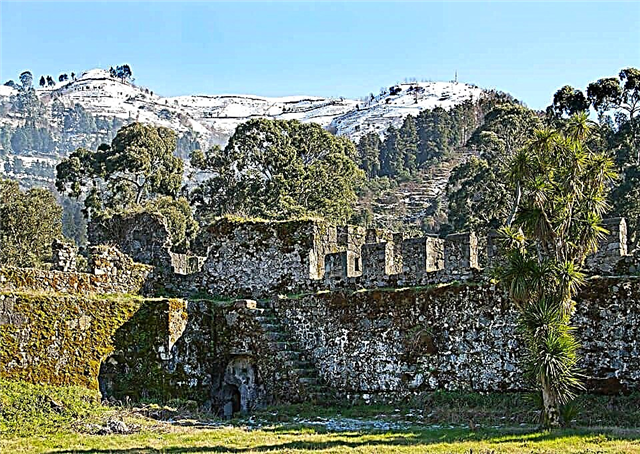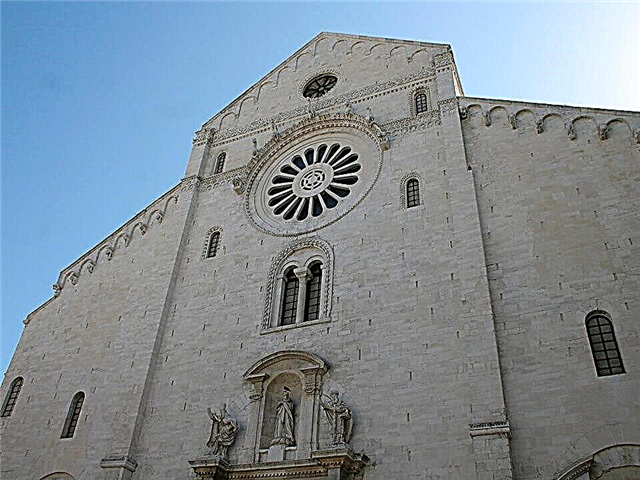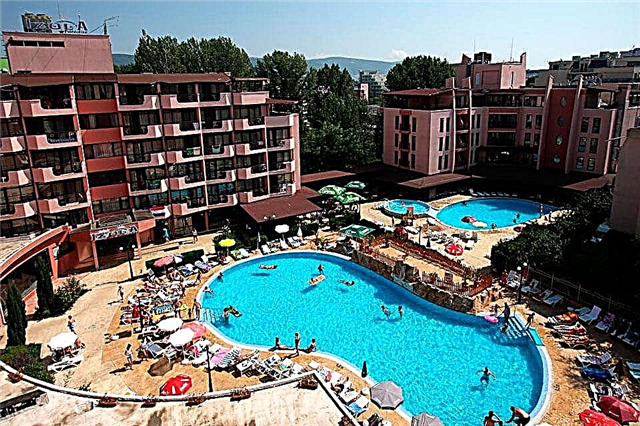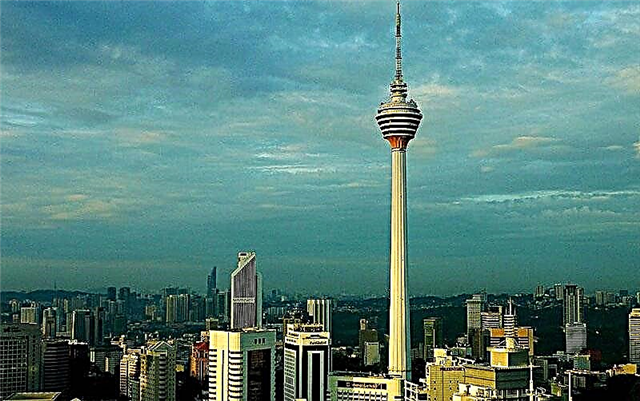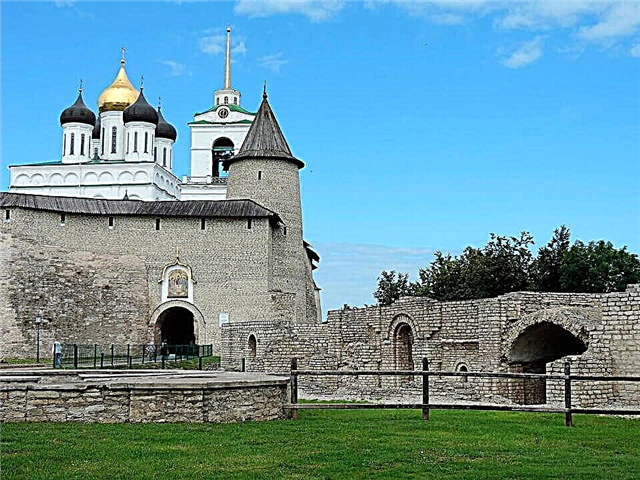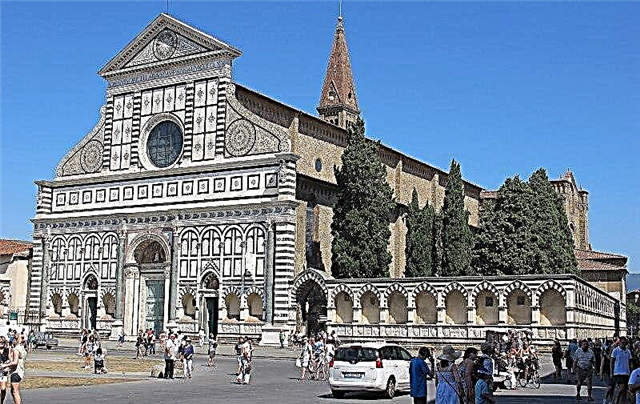Traveling through the historic center of Florence, every tourist will discover a lot of interesting and informative things. These are famous cathedrals with their magnificent chapels and squares, decorated with numerous fountains and monuments, as well as old buildings that keep the memory of their eminent residents.

Tornabuoni Chapel in the Church of Santa Maria Novella
One of these famous landmarks is the Tornabuoni Chapel in the Church of Santa Maria Novella. The walls of the chapel are decorated with paintings by the famous artist Ghirlandaio, who was hired by a relative of Lorenzo the Magnificent to glorify the eminent family of Italian aristocrats. Ghirlandaio did a brilliant job. In almost all the frescoes, among the images of saints, you can see members of the customer's family. Here you can see Messer Giovani himself and his wife, their only daughter, brothers, uncle and mother Lorenzo.
In addition to the eminent relatives of Tornabuoni, the artist depicted himself and his best friends on frescoes, including the founder of the Platonic Academy Marsilio Fichio. It is worth noting that young Michelangelo helped the famous master Ghirlandaio to work with the frescoes.
The Basilica of Santa Maria Novella, located in the historic part of the city, is considered the main Dominican church in Florence. The church was built in the 15th century, on the site of a previously existing Dominican prayer house. Later, through the efforts of monks belonging to the Dominican order, a new church and monastery began to be erected here, which were constantly being completed and rebuilt for many centuries.
[tp_calendar_widget origin = MOW destination = FLR responsive = true subid = ””]
As a result, the architecture of the basilica is distinguished by a mixture of styles from different eras. For many years of its existence, the basilica has not been plundered. Therefore, magnificent stained glass windows, a huge crucifix and chapels are presented to church visitors in the same form in which they were created by the great Florentine masters of the late 16th century. Like any old building, the basilica is distinguished by the presence of mysterious rooms, one of which is the Cloister of the Dead. It was in the local funeral chapels that the bodies of the richest and most noble nobles of Florence found their last refuge.

Basilica of San Lorenzo
The Basilica of San Lorenzo ranks among the largest and oldest churches in the city. The first church building on the site of the currently existing basilica appeared at the end of the 4th century. Eras changed, and the church was rebuilt according to the trends of the time: in the 9th century, the Romanesque style prevailed in architecture, and already in the 15th century - the Renaissance style. In the Renaissance, the sacristy was first added to the church, and a little later, the Laurentian library was erected on the opposite side of the transept.
Subsequently, this library became the most popular and most visited in Italy. The Basilica of San Lorenzo played the role of a family church for the Medici family. Since 1464, after the magnificent burial of Cosimo de Medici in the underground crypt of the church in the basilica, they began to bury all members of this most influential family. All the great dukes who belong to the noble Medici family are buried here.
The church building is shaped like a Latin cross. All decorations of the basilica are works of art, among which it is worth noting two bronze pulpits by Donatello. Special attention should be paid to the memorial chapel - the Medici Chapel, over the creation of which the great Michelangelo worked.

Medici chapel
The Medici Chapel is one of Michelangelo's finest creations. This tomb was created in an atmosphere of sorrow and sorrow. Everything here is subordinated to the spirit of death and the uncertainty of being. A small structure of the chapel stretches up to the dome that crowns it. Light enters the chapel from above, symbolizing the immortality of the soul. In the lower part of the chapel, where the bodies of the deceased Lorenz the Great and his brother Giulio rest, darkness reigns, symbolizing the tragedy of death. The sarcophagi of Lorenzo and his brother depict statues of Morning and Evening, Day and Night.
Among the figures of the Day, the figure of the Day remained unfinished. At first glance, it may seem that the author did not have time to finish it. But in the incompleteness of the Day, Michelangelo put a deep sense of the uncertainty of being, which is difficult to predict. Among the sad tombs is Michelangelo's famous sculpture "Madonna and Child", which is the embodiment of the inextricable closeness of mother and child even after death and reflects the triumph of life over death.
Laurenzian Library
The Laurenzian Library is one of the oldest of its kind in the world. Its founder is Cosimo Medici, who decided to transform his richest collection of unique manuscripts into a home library. The library is named after Lorenzo Medici, the grandson of Cosimo Medici, who made a significant contribution to the enrichment of the library of the eminent grandfather. Since 1571, the collection of books of Laurenziana becomes public and accessible to the inhabitants of Florence. The real architectural masterpiece of the library building is the fruit of Michelangelo's work - a staircase falling like a stream of lava, personifying an endless stream of thoughts.
For many of Michelangelo's contemporaries, this sculptural staircase evoked ambivalent feelings. Some admired its magnificence, others believed that it was simply impossible to move along it, for fear of breaking their necks. Nowadays, every tourist dreams of climbing the stairs, but only regular visitors to the library can afford it. Tourists are forced to contemplate what is outside the building, so as not to break the reverential silence and not disturb the readers within the walls of the famous library.

Palazzo Medici Riccardi
Palazzo Medici Riccardi was originally built as a secular building. The main requirement of Cosimo Medici was the absence of excessive luxury in the architecture of the building being erected. The palazzo, sustained in a strict straightforward style, really meets the requirement of an influential person of those times. The ground floor of this building housed servants' quarters, a kitchen and stables. The owners were located on the second floor.
Here sleeping rooms and rooms for receiving guests and officials were equipped. Visitors' attention is drawn to the square courtyard located in the inner part of the building. On its territory you can admire the magnificent sculptures and growing lemon trees. After the construction of this building, many aristocratic families began to construct their houses in a similar style with a mandatory patio. In 1659, the Medici sells his palace to Ricardi. The new owner partially complements the building and renovates the interior, using the Baroque style, which made the palace spectacular and splendid.
Cathedral of Santa Maria del Fiore
The Cathedral of Santa Maria del Fiore is the symbol of Florence. And this is no coincidence. After all, the dome of the cathedral, created from brick by Filippo Brunelleschi, is so majestic and huge that even today it rises above the city. The largest of the cathedrals not only in Florence, but throughout Italy, translated as the flower of St. Mary. This huge Gothic complex is classified as a UNESCO World Heritage Site.
Initially, the cathedral was built so that all the inhabitants of Florence could fit in it at the same time. This structure, which resembles a huge covered area, can accommodate 90 thousand people. It is not surprising that the construction of a cathedral of such a grandiose size was delayed for six centuries.One by one, the architects who led the construction were replaced, and only by 1887 the cathedral acquired its present appearance. A distinctive feature of the cathedral is the clock created in the 15th century by Uccello.
In addition to the fact that this clock works properly, its hands move in the opposite direction, it is a perfectly executed reconstruction of the mansion in which the founder of Italian literature lived and worked his "Divine Comedy" and other equally famous works. The house is located in the center of the historic part of Florence, not far from the church where the poet met his love.
Despite the fact that for many centuries the writer's personal belongings have not been preserved, many exhibits testify to his life and work, including paintings, interesting documents and drawings. In the house of the museum you can also see an exhibition dedicated to the theme of love between Alighieri and the beautiful Beatrice.

Florentine pig
The Florentine Pig is a unique attraction in Florence. This sculpture is a copy of the formidable boar, which is kept in the Uffizi Gallery. The piglet has been almost 400 years old and today it does not frighten the townspeople and guests with its formidable appearance, but simply "fulfills the wishes" of everyone who happens to be near the city market. One has only to send a coin inside the pig in a clever way. If this fails, the desire may not be fulfilled. As a last resort, you can just rub the piglet's piglet and hope that your plan will soon come true.


